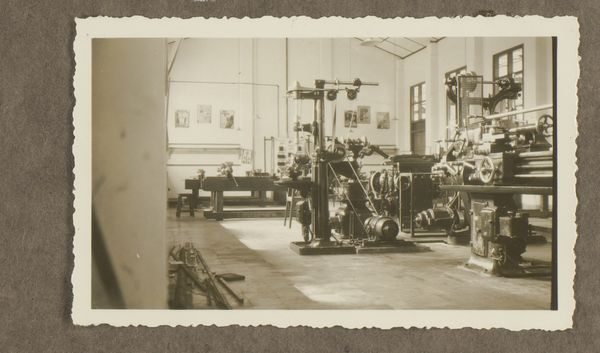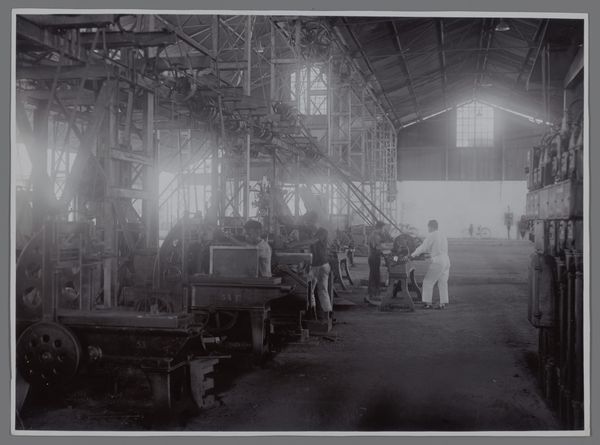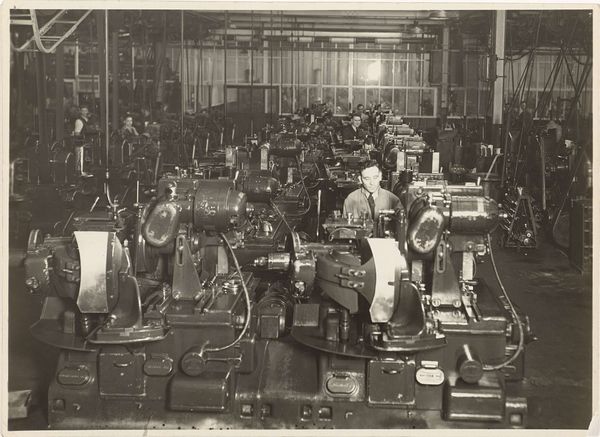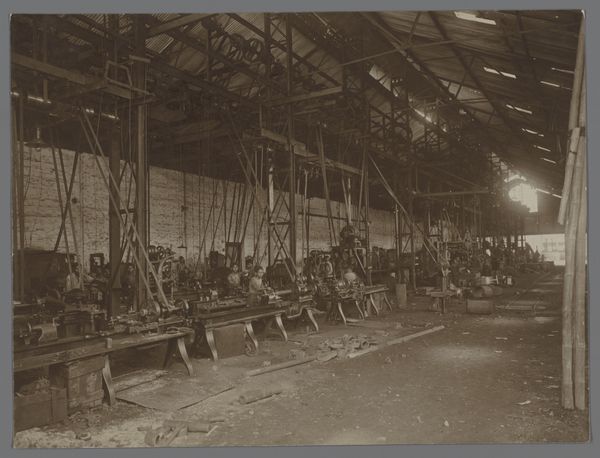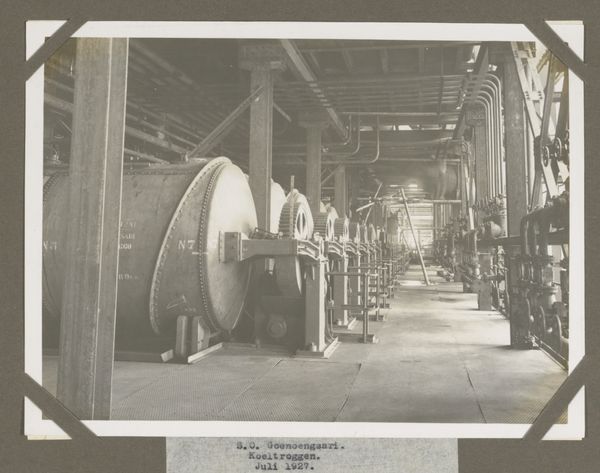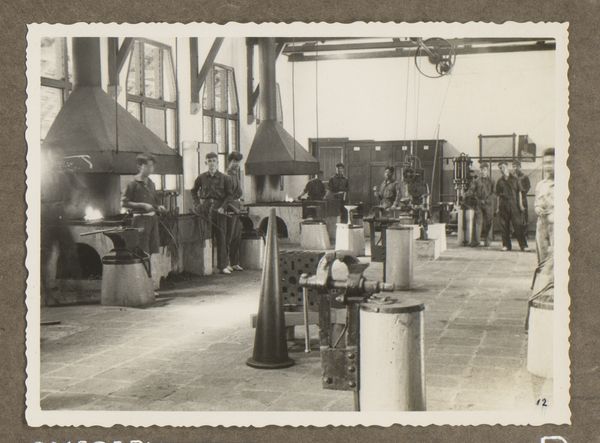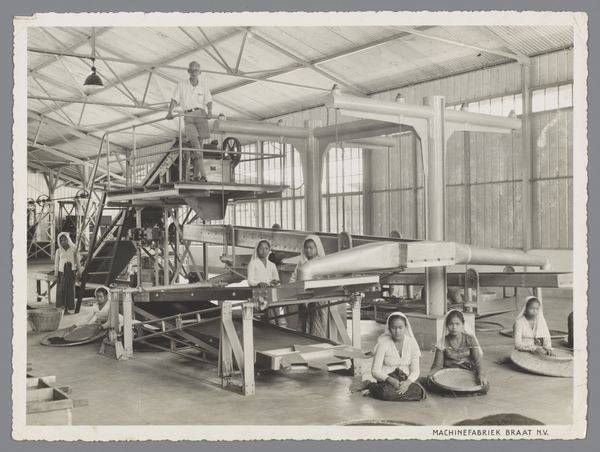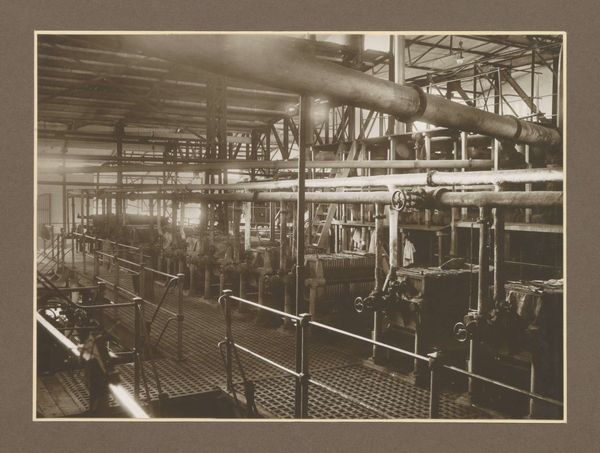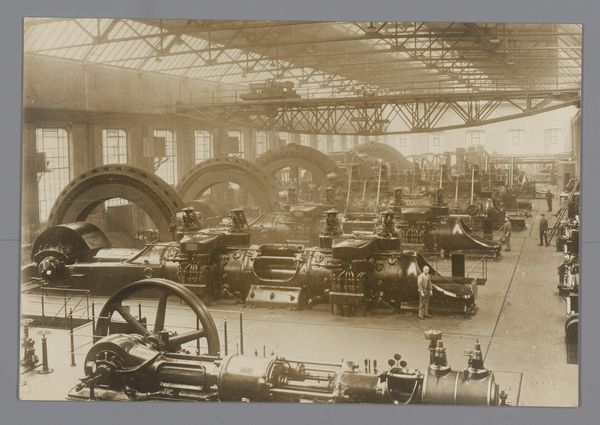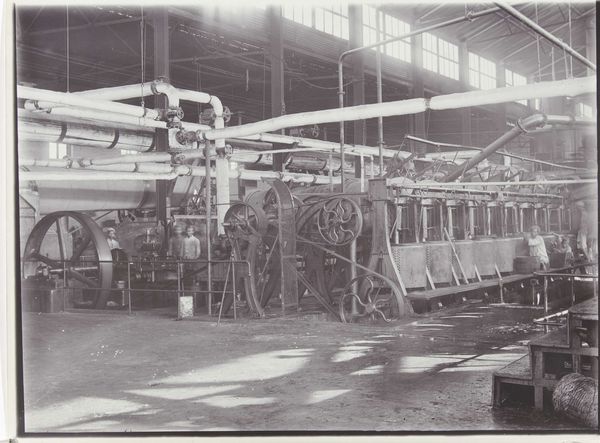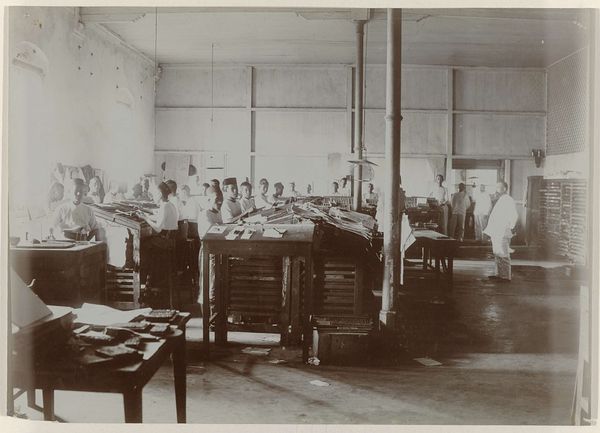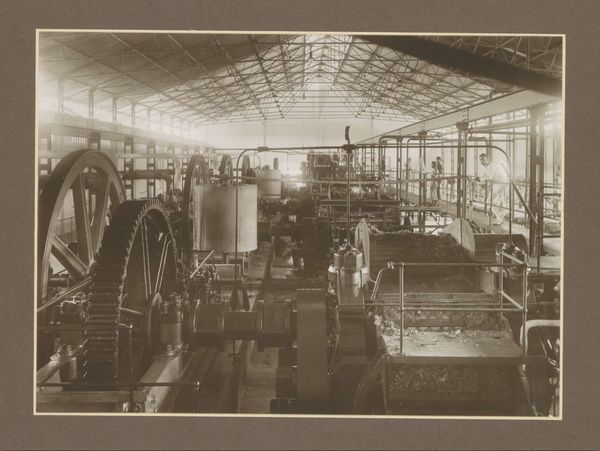
photography, gelatin-silver-print
#
still-life-photography
#
archive photography
#
photography
#
historical photography
#
gelatin-silver-print
#
modernism
#
realism
Dimensions: height 90 mm, width 121 mm
Copyright: Rijks Museum: Open Domain
Curator: This gelatin-silver print is titled "Bankwerkerij van de Prinses Juliana School." It's an anonymous work dating to 1933. What's your first impression? Editor: Immediately, I feel a profound sense of order and purpose. The repetitive forms of the machines evoke a time when industry and craftsmanship were intertwined. But there is an odd sterile quality, despite the suggestion of labor. Curator: Well, let's delve into that a bit. Gelatin-silver printing was a common process then, celebrated for its tonal range and sharpness. This choice would reflect the cultural context of documenting the modernizing world, wouldn’t you say? This image preserves an important aspect of early technical education. Editor: Absolutely. The very tools pictured - these industrial workbenches and vice grips arranged so neatly - become powerful symbols of the work ethic and industrial drive of the era. They represent an idealized vision of progress through manual labor. Curator: Precisely. The way these machines are set up in series implies both efficient workflow and the individual worker's role in a larger, well-organized process. Modernist values prioritizing the efficient design and layout of such work spaces can clearly be seen here. Editor: Yet it’s the stillness, the utter lack of human presence, that strikes me as symbolically loaded. Perhaps it evokes an anticipation, but I perceive this room as waiting, dormant. Those tools suggest an absent humanity, of tasks waiting to be fulfilled. The shadows on the floor contribute to a rather melancholic interpretation. Curator: It's true that the scene is unoccupied, adding an ambiguity. The composition with clear lines could reference similar industrial photography from the period, where function was meant to illustrate form, while showcasing a specific working method as efficiently and neutrally as possible. Editor: Consider also the cultural associations. The clean and sparse design resonates with notions of self-sufficiency and precision; almost suggesting a kind of social engineering through craftsmanship. The uniformity promotes this vision, yet this can easily be taken out of context nowadays as dehumanizing... Curator: Your insight into this brings forth many points regarding the cultural legacy of technology! For me, seeing this makes me want to dive deeper into the social conditions for those constructing the machines—who actually manufactured them and how it reflected that cultural moment. Editor: Indeed, the symbolic language of images, even those seemingly simple, continues to speak volumes.
Comments
No comments
Be the first to comment and join the conversation on the ultimate creative platform.

